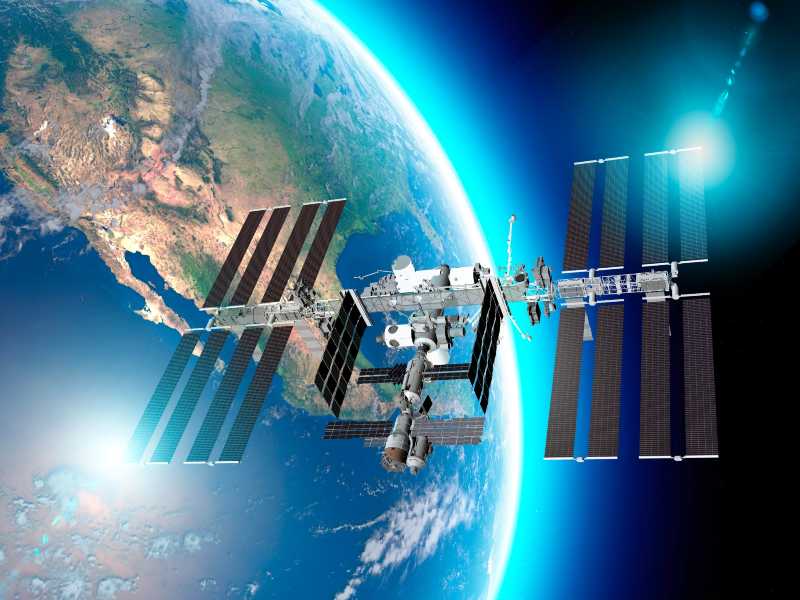
A game-changer in renewable energy, solar is used extensively across the globe as a clean, sustainable and affordable source of energy. But it isn’t just on Earth that solar has significant uses, writes Robert Cathcart.
Solar power has found a valuable niche in space exploration. Here it is used to power a variety of systems and instruments on spacecraft. In fact, the use of solar power in space has many advantages, including its high efficiency, low weight, and virtually unlimited supply.
Yet, there are also limitations and challenges associated with the use of solar in space. This includes the need for batteries to store power during periods of eclipse, the effects of radiation on solar panels, and the cost and complexity of launch and maintenance.
In this article, we explore the history, advantages, limitations and future of solar power in space. We also examine some of the key technologies and trends driving this exciting field forward.
History of solar power in space
The history of solar power in space is a rich one. In fact, solar has played a part in space travel and exploration ever since the early days of the space race in the 1950s and 1960s.
Although the very earliest satellites used batteries as their primary power source, it soon became clear that battery technology was not advanced or efficient enough to power the next generation of spacecraft. It didn’t take long for engineers and scientists to recognise the efficiency and reliability benefits of solar power.
The USA was the first to use solar power in space as part of the Vanguard 1 project to help power its radio transmitter and other instruments. This was closely followed in 1959 by the Soviet Union with the launch of the Luna 1 spacecraft, which also adopted the use of solar panels.
Since then, solar power has been a staple power source for space exploration. For example, NASA’s Mariner mission to Mars and Venus in the 60s and 70s powered their instruments and communications systems with solar. Equally. The Soviet Union’s first space station, Salyut 1 used solar panels to help meet its power needs.
In the 90s solar panels were used to power the instruments and comms on The Hubble Space Telescope. Eight large-scale solar panel arrays were also used to power The International Space Station which was constructed in 1998.
Solar power has also been used for more ambitious projects. This includes the Rosetta spacecraft, which was launched by the European Space Agency in 2004 to study comets. This project used solar panels to power its instruments and propulsion system during its decade-long journey.
Advantages of solar power in space
With a rich history of solar panel use in space, it is hardly surprising to learn that there are several huge benefits to using solar power generation on spacecraft.
Firstly, due to a lack of atmosphere in space, solar radiation goes undiluted. This means that solar panels can achieve almost double the power generation that is possible on Earth. The environment in space also has a lower impact on solar panels when compared to the severe weather conditions of Earth, meaning lower levels of maintenance are required. Solar panels in space also don’t have to deal with potential cloud cover and other limiting factors. This means they can be significantly more reliable as a source of power.
Given the power requirements of modern spacecraft, there are only really two options for power generation – solar or nuclear power. In this case, solar offers a much safer and environmentally friendly method for generating the required energy.
Finally, solar panels are a relatively lightweight way to generate power, which can be advantageous on spacecraft.
Limitations and challenges of solar power in space
Of course, there are also some challenges and limitations that need to be accounted for when discussing solar power in space.
For example, solar power isn’t 100% available to spacecraft, such as when the craft is in the total or partial shadow of a planet. This means that batteries must also be installed in order to ensure the continuity of the power supply.
The efficiency of solar panels can also vary based on the spacecraft’s distance from the sun. This can make it difficult to calculate how much energy the craft will have access to at any one time.
Although the need to maintain solar panels in space is low, the small amount it needs can be incredibly costly and time-consuming. There is also a risk of solar panels being damaged by space debris and exposure to high levels of solar radiation.
How solar panels are currently used on spacecraft
The possibilities are practically endless when it comes to how solar panels can be used on spacecraft. However, power generated is typically used for powering communication systems, scientific instruments, propulsion systems, environmental control systems and navigation systems.
For example, the Mars Rover’s main power source is a multi-panel solar array. This array can generate about 140 watts of power for up to four hours per Martian day. This amply covers the rover’s requirements for energy (100 watts) to drive.
In addition, the ESA’s Jupiter Icy Moons Explorer launched in April of this year with the mission of exploring Jupiter’s Icy Moons. The spacecraft is using a vast 27m long solar array which unfurls into a cross shape. The power created from the array will power the craft’s many instruments and systems.
The future of space-based solar: Summary
It is clear that solar power has played an important role in space exploration to date. Yet it is the future of space-based solar which is perhaps the most exciting. Advances in solar technology such as thin-film solar cells may help improve the efficiency, durability and weight of space-based solar panels.
Other exciting potential developments include the potential to capture solar power in space, and then transfer it to Earth for use. This concept could be a huge step in developing better global energy security whilst limiting the need for environmentally damaging energy production methods.
ABOUT THE AUTHOR

Robert Cathcart
Robert Cathcart is a Yorkshire-based renewable energy researcher, copywriter and blogger. With over 20 years experience in copywriting, he has turned his attention to ecological issues and the green revolution. Specialising in solar power, Robert aims to inform, educate and inspire.